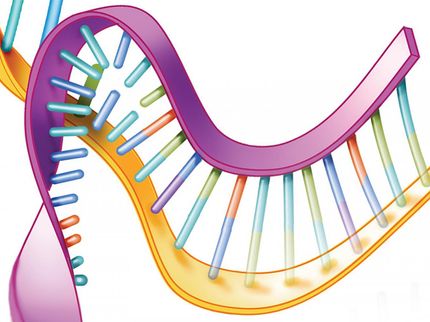Research suggests new cause to blame for spinal muscular atrophy
Over 15 years ago, researchers linked a defect in a gene called survival motor neuron (SMN) with the fatal disease spinal muscular atrophy. Because SMN had a role in assembling the intracellular machinery that processes genetic material, it was assumed that faulty processing was to blame.
Now, University of North Carolina scientists have discovered that this commonly held assumption is wrong and that a separate role of the SMN gene – still not completely elucidated - is likely responsible for the disease's manifestations. The research appears in Cell Reports.
"There are a number of gene therapies and RNA therapies in the pipeline that may still work regardless of the underlying cause of the disease," said senior study author Gregory Matera, PhD, professor in the departments of biology and genetics and a member of the Program in Molecular Biology and Biotechnology in the UNC School of Medicine.
"But if those approaches don't pan out, it could be that the therapy isn't reaching the precise tissues where defective SMN is most damaging," he added. "Our result is exciting because we now have a starting point to uncover what is truly causing this disease so we can more effectively treat it."
Spinal muscular atrophy is characterized by muscle weakness and wasting (atrophy) resulting from the progressive loss of motor neurons in the spinal cord. The disease is due to a partial loss of function in the SMN gene that normally loads up the "splicing" machinery with the proteins necessary for cutting and pasting the cell's genetic instructions together. Cells that completely lack SMN fail to correctly generate and process the genetic blueprint for the proteins needed to carry out the rest of the body's activities.
But in addition to roles in splicing, SMN has been implicated in a number of other processes that occur only in specific tissues, such as the formation of the junction between muscle and nerve cells or the maintenance of muscle architecture. Thus Matera and his colleagues wondered if defective splicing was really responsible for spinal muscular atrophy or if one of these tissue-specific roles was the cause.
In this study, the researchers investigated whether they could disconnect SMN's "primary" role in splicing from the physical characteristics typical of spinal muscular atrophy. To do so, they first created fruit flies carrying the same genetic mutation that causes the disease. The mutant flies didn't survive to the larval stage and showed significant defects in locomotion as well as reductions in those important splicing proteins.
But when the researchers re-introduced functional SMN, only the larval lethality and locomotor defects - not the level of splicing factors - were rescued. Therefore, this splicing function of SMN is not a major contributor to spinal muscular atrophy. Right now Matera and colleagues are using a number of highly sophisticated "–omics" methods such as proteomics and RNomics to pin down the real culprit.
Other news from the department science
Most read news
More news from our other portals
See the theme worlds for related content
Topic world Gene therapy
Genetic diseases once considered untreatable are now at the center of innovative therapeutic approaches. Research and development of gene therapies in biotech and pharma aim to directly correct or replace defective or missing genes to combat disease at the molecular level. This revolutionary approach promises not only to treat symptoms, but to eliminate the cause of the disease itself.

Topic world Gene therapy
Genetic diseases once considered untreatable are now at the center of innovative therapeutic approaches. Research and development of gene therapies in biotech and pharma aim to directly correct or replace defective or missing genes to combat disease at the molecular level. This revolutionary approach promises not only to treat symptoms, but to eliminate the cause of the disease itself.



















































